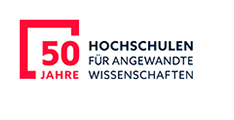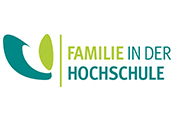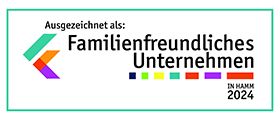Since the 2015/16 winter semester, Hamm-Lippstadt University of Applied Sciences has been involved in the Graduate Study Cooperation Project (KOAB) (“Kooperationsprojekt Absolventenstudien”). In this project, the Institute for Applied Statistics (ISTAT) coordinates an online survey at around 80 higher education institutions of the alumni who passed their exams the previous year.
-
Subject of the survey
Central topics of the graduate survey are:
- Professional career path since graduation
- Enrollment in a continuing Master's study program (if applicable)
- Retrospective rating of the study program and study conditions at the former university
- Social demographic features and motives for studying in general as well as choice of study program
-
Purpose of the survey - Why is it important to participate in the survey?
Further development of academic affairs and study programs at HSHL
The survey results will be processed at HSHL both in individual reports for each study program and in overall university-wide reports. They serve to continuously review and further develop the framework conditions of academic affairs at both a university-wide and an individual departmental level as well as of individual study programs.
One concrete example of this:
Within the scope of survey, our graduates reported that, although the existing educational and learning facilities may be well-equipped, they were not available in sufficient numbers, particularly at the Hamm location. As a result, conversion measures have meanwhile been implemented at the Hamm Campus to make the dining hall available as a place for students to also study, congregate, and socialize. The dining hall’s opening hours have also been changed to reflect this re-purposing. Work is being done on other concepts. For instance, by the Campus Life Working Group, which is dedicated to creating (more) leisure activity offerings and study spaces at both HSHL Campuses.
The results of the survey are thus of interest for:
- University management
- Teaching staff and heads of studies
- Student counseling
- Career and Alumni Service
- Other central services
- Students and prospective students
Educational monitoring and research
On a federal state level, an anonymized cross-university data set from the survey is used for education monitoring. That means that the state ministry of North Rhine-Westphalia commissions a report on the graduate survey to be compiled every two years titled "Studium und Beruf in Nordrhein-Westfalen". Among other meta-questions, the report examines whether the graduates’ employment befits the degree program they completed.
Moreover, scientists can use the data collected in the graduate survey for educational research.
At the beginning of the survey, it is indicated whether survey results will be used for national education monitoring.
Further Information
For more detailed information on KOAB, such as survey methods and data processing, visit the ISTAT project website.
Here is an insight into the results of the 2020 graduate survey:
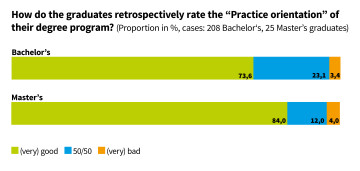
*Rating scale: 1 (very good) – 5 (very bad), mean of 6 items, proportion in % of values ranging from 1.0 – 2.5 ≙ (very) good, 2.6 – 3.4 ≙ 50/50, 3.5 – 5.0 ≙ (very) bad
Around 72 % of the graduates with a Master's degree rated the “Practice orientation” as “(very) good”. Practice orientation encompasses aspects like how the study program links theory and practice, what offers are made to collaborate on projects in the study program, or how current the course content is in relation to practical requirements.
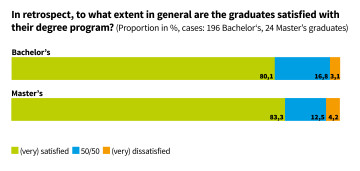
In retrospect, around 80% of the graduates with a Bachelor's or a Master’s degree state that they are "(very) satisfied" with their studies at HSHL.
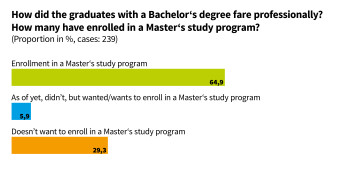
Since graduation, around 65% of the survey participants started a Master's study program, while around 6% still plan to do so. In contrast, around 29% have no intention of pursuing a master's degree.

Around 58% of the graduates with a Bachelor's and 78 % with a Master's degree found employment within three months after graduation. Within a maximum of six months after graduation, more than 70% of the graduates with a Bachelor's and around 89% of the graduates with a Master's degree had already found gainful employment.

The majority, i.e., around 62 % of graduates with a Bachelor's, and over 90% with a Master’s degree found an employment by applying for an advertised position. Way behind in second place among the successful search strategies is the reliance on personal contacts. A small proportion of graduates with a Bachelor's degree additionally found a job by submitting speculative or unsolicited applications.
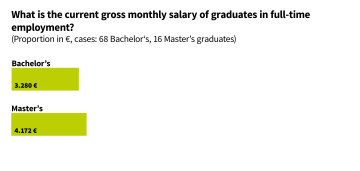
On average, graduates with a Bachelor’s degree stated earnings around €3,280 per month. Master's graduates working full-time earned on average €900 more in gross monthly salary, averaging €4,172.
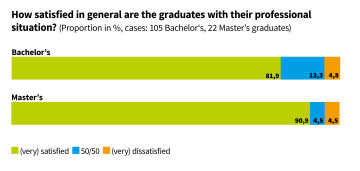
Around 82% of graduates with a Bachelor's degree and 91% of graduates with a Master’s degree state that they are "(very) satisfied" with their professional situation. By contrast, only around 5% of both groups reported that they are "(very) dissatisfied".
